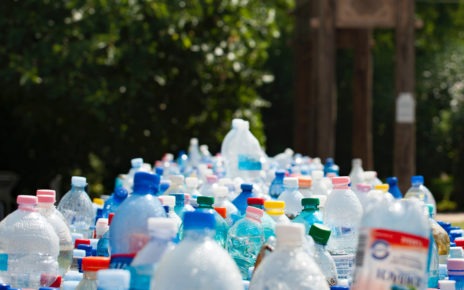Photo caption: One way to make that puffy jacket last longer while giving it a little panache is by adding a patch from Wyoming-based Noso.
Dear EarthTalk: I heard that the apparel industry has a huge carbon footprint and environmental impact. What are manufacturers doing to combat this problem? — Bea Wilson, Miami, FL
It is true that making and distributing new clothing has a huge impact on the environment. Cotton production is beset by synthetic chemical inputs including pesticides, fertilizers and dyes, not to mention the setting aside of so many millions of acres of farmland that could be used to feed hungry mouths.
Meanwhile, polyester and other synthetic fabrics may not take up crop land, but they are made out of petroleum and thus contribute to our continuing reliance on fossil fuels.
Another environmental issue with the apparel industry is how much shipping goes on to get raw materials to and finished products out of pollution-spewing factories across China, Indonesia and other far flung locales where labor and real estate are cheap.
So, what can be done? For one, if you like cotton, go organic. And bonus points if it’s grown and processed locally or at least within the U.S., saving greenhouse gas emissions caused by shipping long distance. Meanwhile, if you’re a fan of synthetic fibers—or rely on them for their technical performance attributes, you should look to buy used items or new ones made from recycled materials.
California-based outdoor gear and clothing manufacturer Patagonia has pioneered reusing and recycling of its clothing items through its landmark Common Threads program. Patagonia customers can get their jackets, shirts, hoodies and other favorite items repaired for free by the company. You can bring those damaged items into a Patagonia store or mail them into company headquarters to be repaired, returned and put back in your regular rotation.
And if you’re just plain tired of your Patagonia wear, the company will take it back and give you a credit towards something new. Your old jacket could well end up for sale on Patagonia’s Worn Wear website—cleaned, repaired and available for a third of the price you paid for it new.
Meanwhile, other apparel companies are blazing new trails, too, when it comes to sustainability. Another California company, Scalable Press, for instance, has prioritized sustainability as it ramps up sales of its custom-printed t-shirts and other clothing items. By diverting waste and turning it into fuel, recycling water used during production processes, pushing virtual samples over physical ones so as to produce less waste, and encouraging its customers to choose “direct-to-garment” printing (which doesn’t require using energy-intensive industrial drying machines), Scalable is setting a high bar for other clothing and screen printing businesses to follow.
Yet another way to make apparel last longer while giving it a little panache is by adding a patch from Wyoming-based Noso. Kelli Jones launched the company in 2015 after realizing that there might be a market for the homemade star and heart patches she was using to mend her own ripped or torn outdoor gear. “The average American tosses away 70 pounds of textiles annually,” Jones tells Outside. “If a critical mass of people starts patching their gear instead of trashing it, that has an impact.”
CONTACTS: Patagonia Worn Wear, wornwear.patagonia.com; Scalable Press, scalablepress.com; Noso Patches, www.nosopatches.com.
EarthTalk® is produced by Roddy Scheer & Doug Moss and is a registered trademark of the nonprofit EarthTalk. To donate, visit www.earthtalk.org. Send questions to: [email protected].





